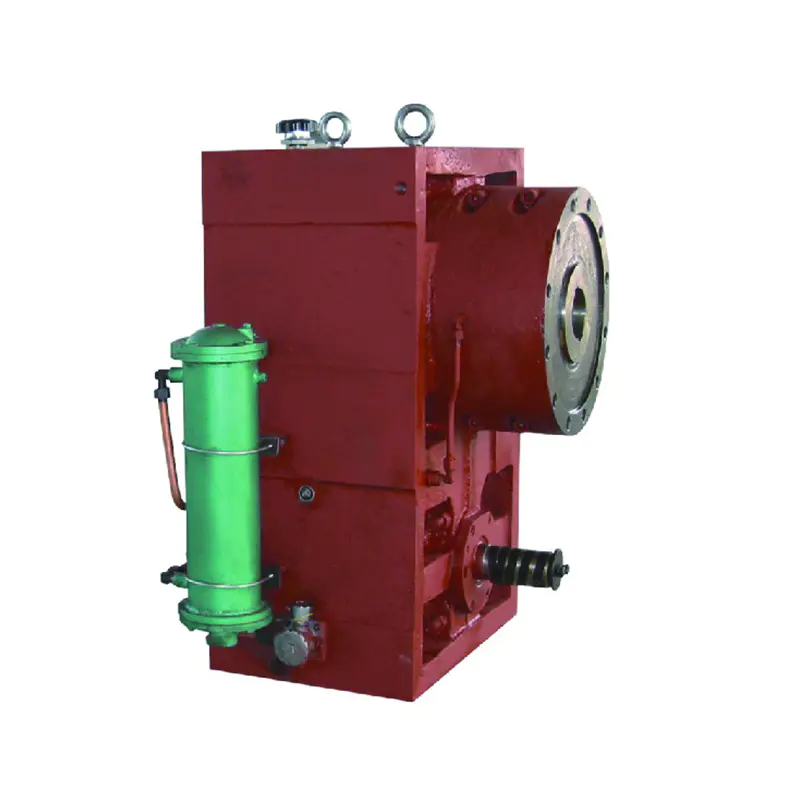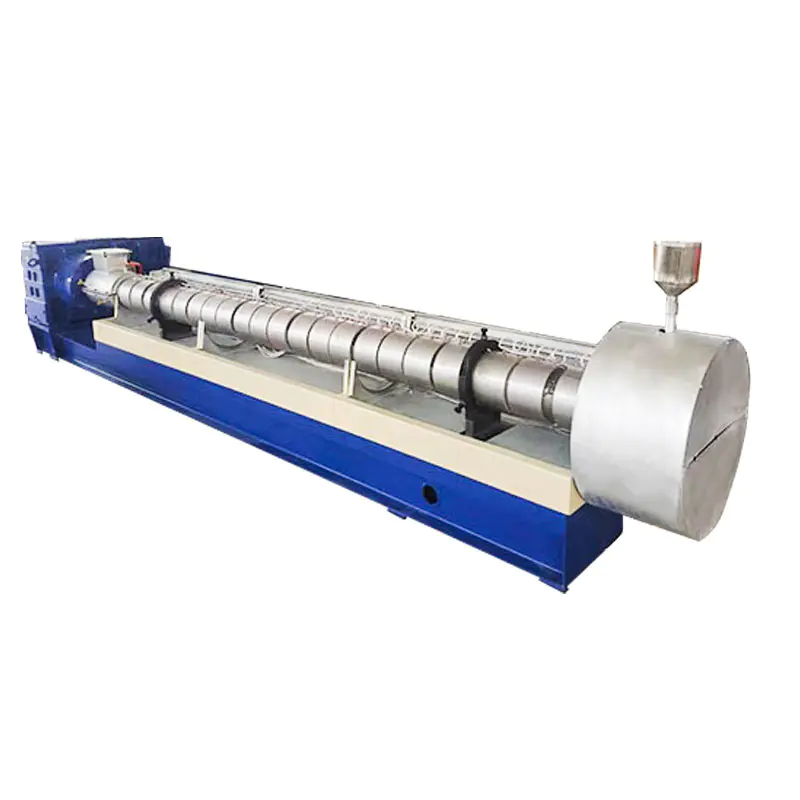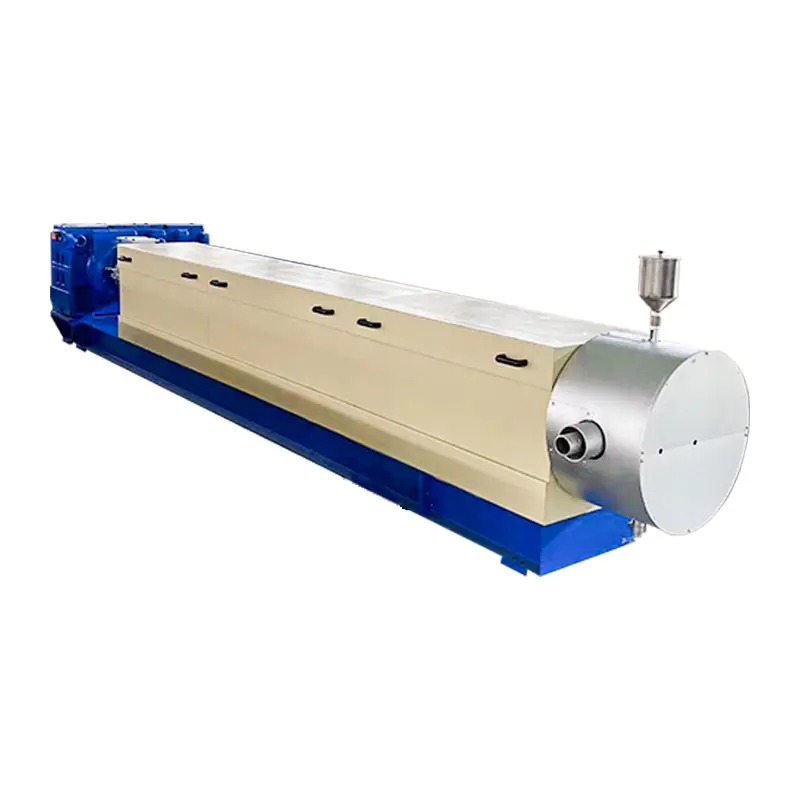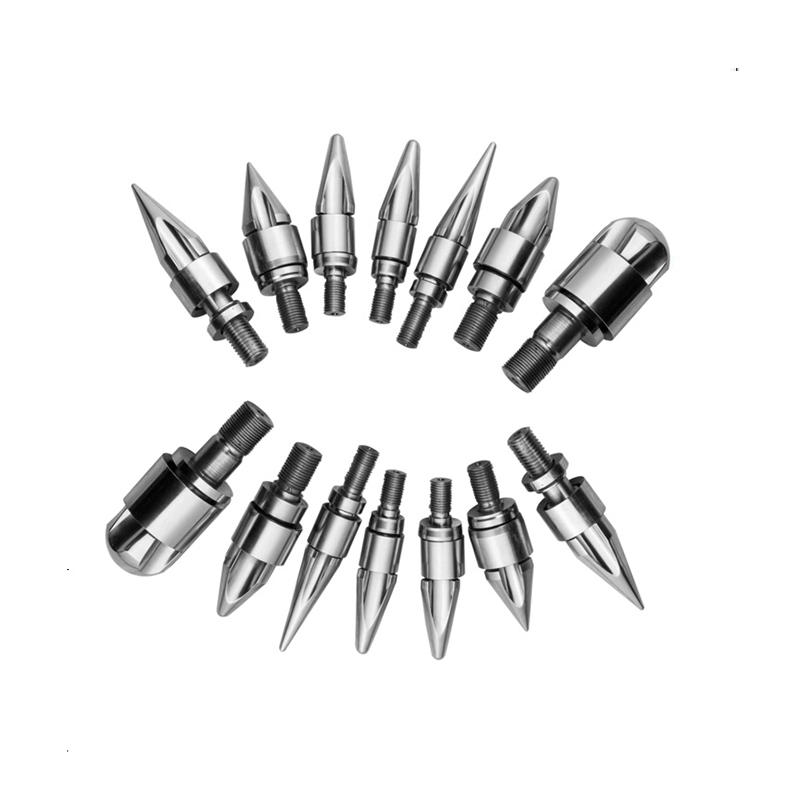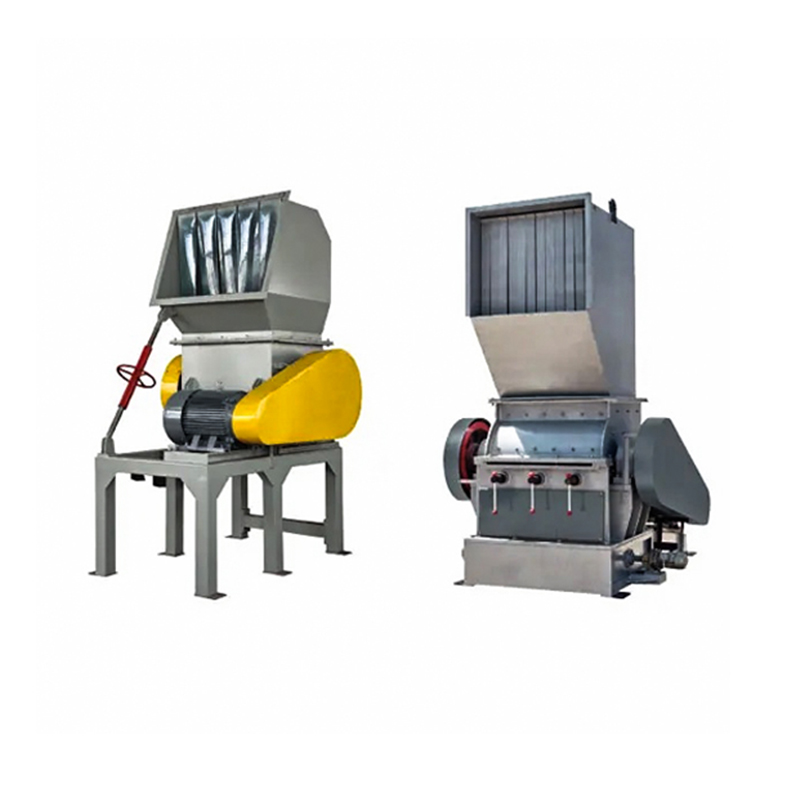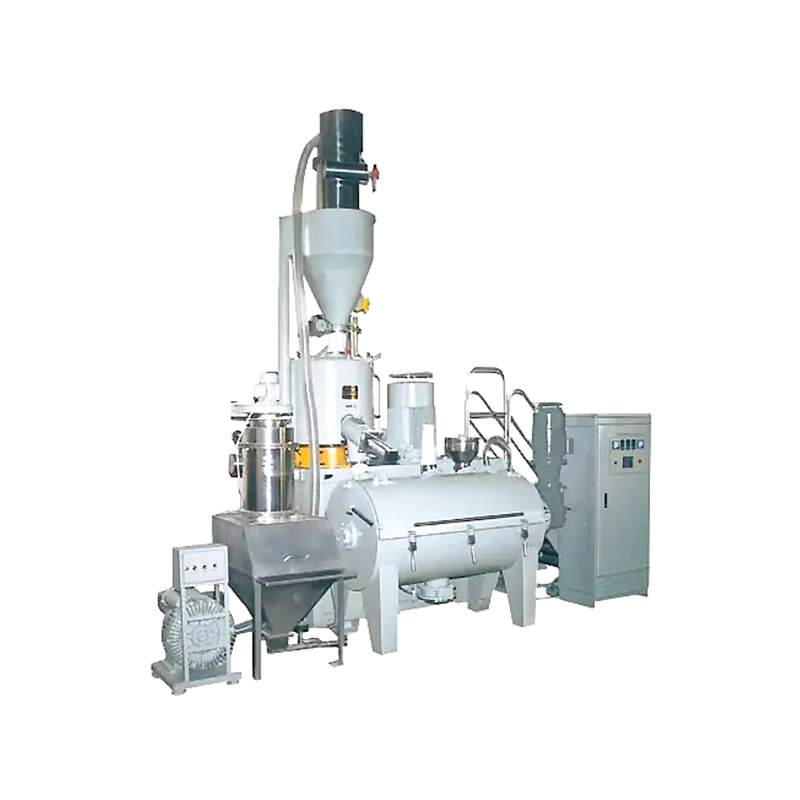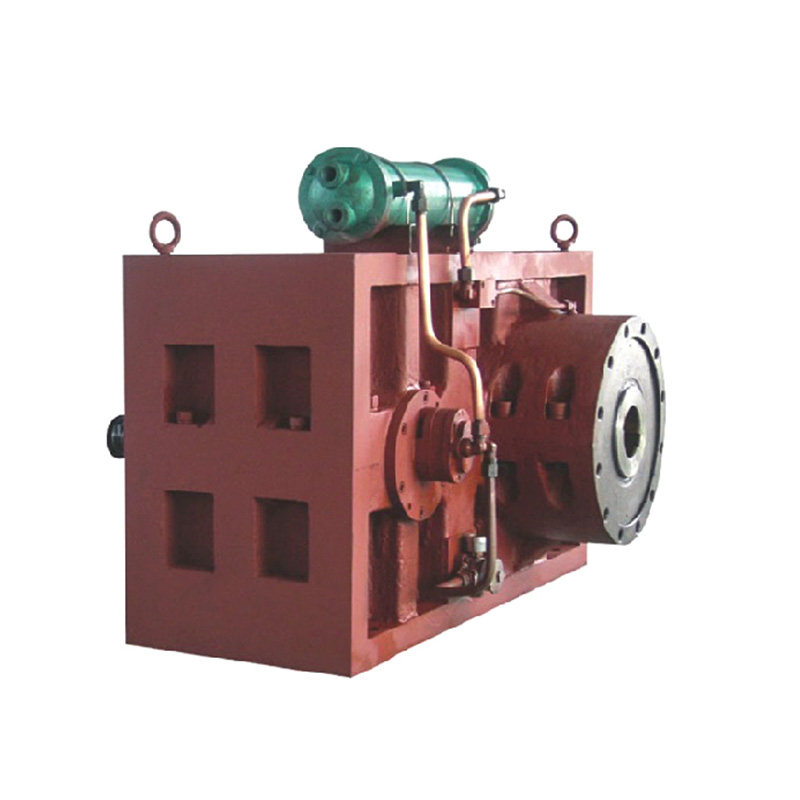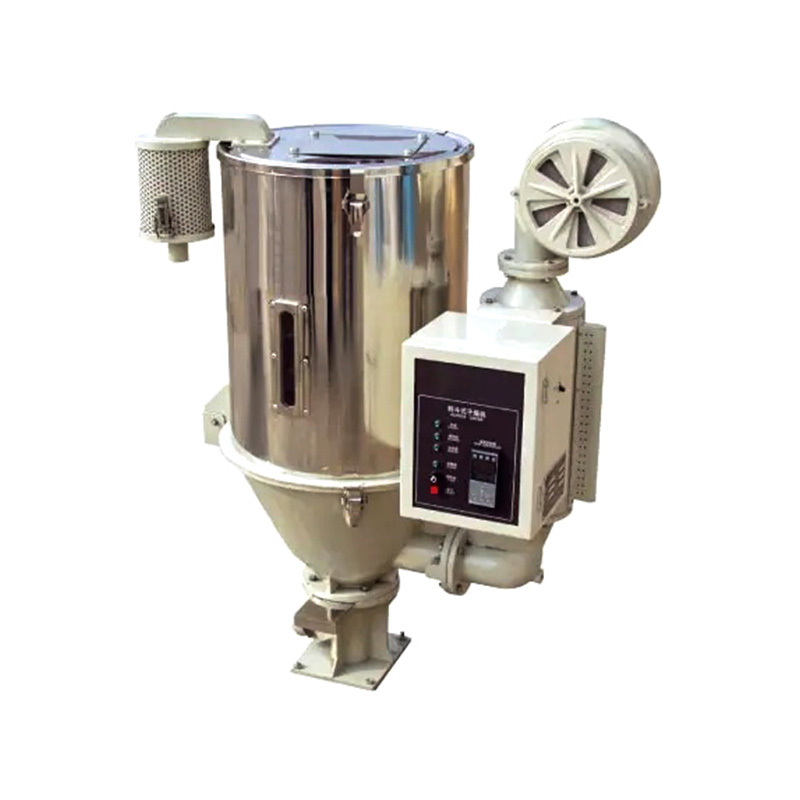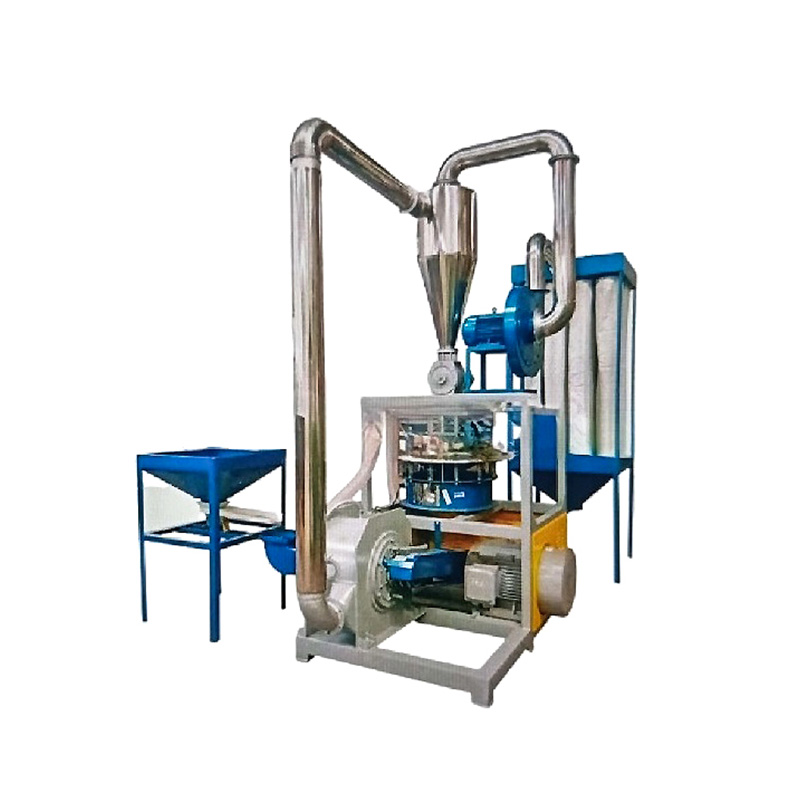Guide to Conical Screw Barrels: Unveiling the Core Component
In the compounding and extrusion processing fields of industries like plastics, chemicals, food, and pharmaceuticals, the Conical Screw Barrel plays a vital role. It is the core component of a Conical Twin Screw Extruder, offering unique processing advantages distinct from parallel twin-screw and single-screw extruders due to its specific design.
1. Structure and Design Features
As the name suggests, the core characteristic of the conical screw barrel is its "conical" design. Imagine two screws with helical flights; they are not parallel cylinders but resemble two cones or truncated cones pointing apex-to-apex, housed within a matching conical barrel.
- Two Screws: Typically configured for counter-rotating, non-intermeshing operation. This means the screws rotate in opposite directions (one clockwise, one counterclockwise), and their flights do not intermesh during rotation (unlike intermeshing twin screws where flights mesh together).
- Conical Design:
- Feed End (Inlet): Largest diameter. This provides a large opening area, facilitating smooth feeding of bulky, fluffy materials (like powders, pellets, recyclate) or low-density materials.
- Discharge End (Die End): Smallest diameter. As material is conveyed forward, compressed, melted, and mixed, the tapering cone naturally generates increasing pressure on the material (acting like a melt pump).
- Flight Elements: The screw surfaces usually feature continuous flights (similar to large-pitch single flights). Flight depth, pitch, and other parameters are designed based on material properties and process requirements.
- Barrel: The internal contour matches the screw's taper, forming a closed processing chamber. The barrel is typically segmented and equipped with heating/cooling systems (electrical, oil heating/cooling) and temperature sensors.
2. Working Principle
Material enters from the feed hopper into the wide feed section and is conveyed forward by the rotating screws:
- Conveying and Compression:
- Because the screw diameter decreases from feed to discharge, the flight depth also becomes shallower (flight volume decreases). As material is conveyed forward, its space is progressively compressed, increasing density.
- This progressive volumetric compression is one of the core physical effects of the conical design, applying gentle but continuous pressure to the material (especially powders), aiding in venting and initial compaction.
- Melting:
- Frictional heat generated by compression, combined with external barrel heating, raises the material temperature (especially thermoplastics), initiating melting.
- The conical design promotes relatively uniform and gentle melting.
- Mixing and Homogenization:
- Although the screws do not intermesh, gaps (clearances) exist between the screw flight tips and the barrel wall, and between the flight flanks of the two screws.
- Material undergoes intense shear within these gaps. Simultaneously, material is pushed and exchanged between the two screws, achieving distributive mixing. The relatively long residence time also aids in mixing and homogenization.
- Venting/Devolatilization:
- Air, moisture, or small volatile molecules trapped during feeding are more easily squeezed out during compression. Conical barrels often feature vent ports designed downstream of the compression zone, utilizing negative pressure (material expansion or vacuum assistance) at this point for efficient volatile removal.
- Pressure Build-up:
- As material is conveyed to the smallest diameter discharge end, the screw cross-section is minimal, and the flight channels are shallowest. This means that at the same screw speed, the conveying pressure per unit area increases significantly, creating a natural "melt pump" effect. This provides stable, easily established high pressure for the die.
- Discharge: The homogenized melt is pushed under high pressure through the die mounted at the front end of the barrel, forming the desired shape (e.g., pipe, sheet, rod, pellets).
3. Core Advantages
- Exceptional Feeding Performance: The large feed throat is ideal for handling difficult-to-feed materials like powders, low-bulk-density recyclate, or fiber-reinforced materials. Minimizes bridging.
- Efficient Devolatilization/Venting: The natural volumetric compression and subsequent expansion zone design (at vents) make it ideal for materials with high moisture or volatile content, offering high devolatilization efficiency.
- Gentle Plasticization and Mixing: Progressive compression and relatively lower shear rates (compared to co-rotating intermeshing twins) provide a gentler process, especially suitable for:
- Heat-Sensitive Materials: PVC (Polyvinyl Chloride) is the quintessential application, effectively minimizing degradation.
- Shear-Sensitive Materials: Such as certain elastomers, biopolymers, wood-plastic composites (reducing fiber breakage).
- Materials requiring preservation of physical properties (e.g., molecular weight).
- Superior Pressure Build-up Capability: The conical discharge end naturally generates high pressure, making it ideal for direct extrusion (e.g., profiles, pipes) or providing stable pressure to downstream equipment (e.g., pelletizing die).
- Self-Cleaning Characteristics (Relative): Counter-rotation and flight design offer a degree of self-cleaning, reducing material stagnation and degradation.
- Relatively Low Energy Consumption: Gentle shear typically implies lower Specific Mechanical Energy (SME) input.
- High Filling Capacity: Performs well when handling materials with high filler content (e.g., calcium carbonate, wood flour).
4. Primary Application Areas
Conical twin-screw extruders (core: conical screw barrel) are particularly well-suited for:
- PVC Processing: Their most classic and largest application, including:
- Rigid PVC (uPVC): Pipes, profiles (window/door), sheets.
- Flexible PVC (PVC-P): Wire/cable jacketing, hose, film, artificial leather.
- Other Heat-Sensitive or Shear-Sensitive Materials: Such as CPE, CPVC, TPE, TPU, certain biodegradable plastics.
- Profile Extrusion: Window/door profiles, trim, etc. (often paired with downstream calibration/cooling lines).
- Pipe Extrusion: Plastic pipes of various sizes.
- Pelletizing/Compounding: Especially for compounding tasks requiring high devolatilization or involving loose materials (e.g., PVC dry blend pelletizing, recyclate pelletizing).
- Highly Filled Composites: Like Wood-Plastic Composites (WPC), Stone-Plastic Composite (SPC) flooring substrates.
- Devolatilization/De-Solventization: Processing polymer solutions or slurries containing solvents or large amounts of volatiles.
5. Limitations Compared to Parallel Co-Rotating Twin Screws
- Mixing Intensity (Especially Dispersive Mixing): The counter-rotating non-intermeshing design generally provides lower shear intensity and less complex mixing action than intermeshing co-rotating parallel twin screws. Parallel twins are superior for applications requiring very high shear dispersion (e.g., nano-filler dispersion, blending high-viscosity components).
- Screw Speed Limitation: The conical design presents more complex dynamic balancing issues at high speeds, typically resulting in a lower maximum speed (e.g., tens to a few hundred RPM, compared to hundreds or even over a thousand RPM for parallel twins).
- Throughput Limitation: Limited by screw speed and flight volume design, its absolute maximum throughput capability is generally lower than high-speed intermeshing co-rotating parallel twin screws.
- Screw Configuration Flexibility: Conical screws are usually integral or have limited modularity. Their flexibility for varying flight element combinations is far lower than the highly modular parallel twin screws (which can freely combine conveying, kneading, reverse elements, etc.). Process adjustment relies more on temperature, speed, feed rate, and inherent screw design.
- Residence Time Distribution (RTD): Residence time distribution tends to be wider compared to parallel twin screws.
6. Key Considerations for Selection and Use
- Material Characteristics: Powder/pellets? Bulk density? Thermal stability? Shear sensitivity? Moisture/volatile content? Mixing requirements? This is the primary basis for choosing conical vs. parallel twin screws.
- Process Goal: Primarily extrusion? Or pelletizing? Is devolatilization a core requirement? What is the target throughput?
- Taper Design (L/D Ratio & Taper Angle): The Length/Diameter ratio (L/D, effective screw length relative to discharge diameter) and the specific taper angle influence compression ratio, residence time, mixing efficiency, and pressure build-up capability.
- Screw Design: Flight pitch, flight depth profile, etc., need optimization for the material and process.
- Barrel Temperature Control: Precise zonal temperature control is critical, especially for heat-sensitive materials (e.g., PVC).
- Screw Speed Range: Must meet shear and throughput requirements of the process.
- Drive Power & Torque: Must provide sufficient energy input, especially under high die-head resistance.
- Maintenance: Monitor screw and barrel wear (especially with highly filled materials), ease of cleaning (avoid dead spots), and implement regular maintenance schedules.



 عربى
عربى
